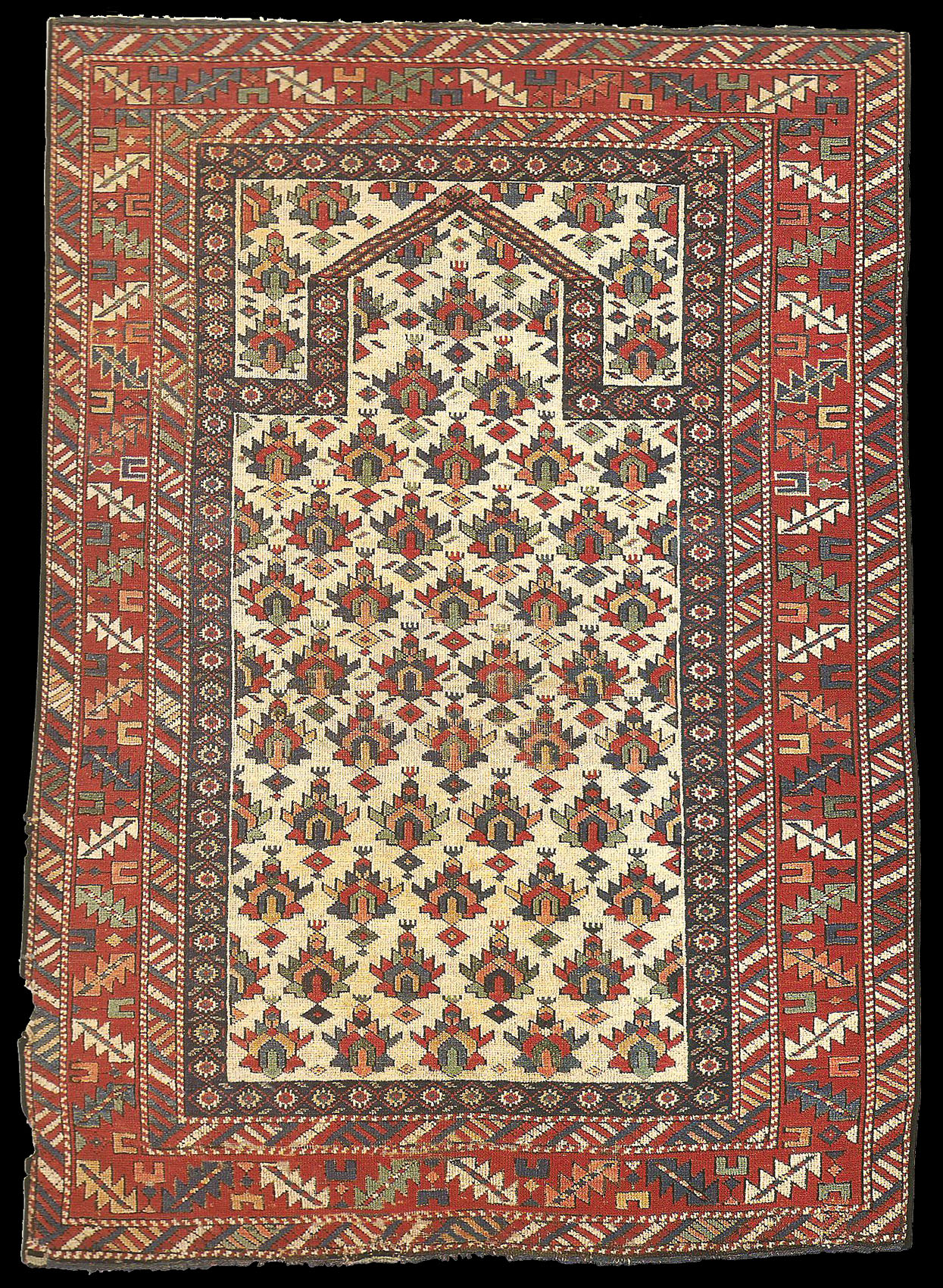|
59
DAGHESTAN
3rd quarter 19th century 0.94 X 1.37m (3'1" x 4'6")
The colouring and drawing of the field of this very pretty palmette
Daghestan are quite similar to those of a rug sold at Christie's in 1990,
which deservedly quadrupled its auction estimate. The employment of
palmettes in Caucasian rugs is an old, unbroken tradition dating back to the
classical Dragon and Blossom carpets of the seventeenth century. By the
nineteenth century, this motif had developed into the geometric, abstract
version seen here.
Most palmette Daghestans bear reasonably credible dates from the second half
of the nineteenth century. The guard borders are always of alternating
oblique stripes. The main borders most frequently feature the floral 'crab'
design and less often a design of hexagonal lozenges containing hooked
motifs. The present 'leaf-and-calyx' border is uncommon for prayer rugs of
this group. One other such example, virtually identical to ours (although
less colourful) was published in Nagel (auction catalogue), 7 June 1980, lot
264, colour plate 96. Both pieces feature a Persian-style inner guard
border, of floral design with a blue ground, that frames the field and
matches the pattern of the gabled prayer arch. This is a rather unusual
feature: in most of the parallel pieces the prayer arch is free-floating and
of a pattern not connected with the guard borders.
published Ralph Kaffel's Caucasian Prayer Rugs, plate 59
lit: published Ralph Kaffel's Caucasian Prayer Rugs, plate 59

 |


